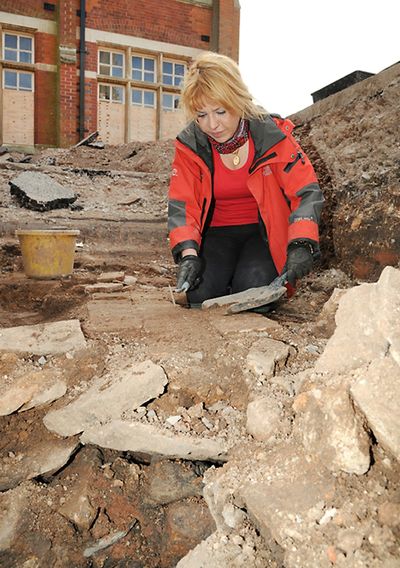Remains match profile of Britain’s Richard III

LONDON – Is now the summer of his disinterment?
Archaeologists digging in central England for the remains of Richard III, the king immortalized as a murderous tyrant by William Shakespeare, have found bones that in many ways match his profile – literally.
The University of Leicester, which is spearheading the search, said Wednesday its team of archaeologists had unearthed the skeleton of an adult male bearing signs of possible battle wounds and of a severe curvature of the spine that would have made one of the man’s shoulders appear much higher than the other.
Richard was the last English monarch to die in battle, in 1485, at Bosworth Field. Described as “deform’d” by Shakespeare, he was buried without pomp in a medieval friary in Leicester.
Working in the past three weeks in a small downtown parking lot, archaeologists discovered the ruins of what appears to have been the friary, with the bones in a spot at the east end of the church, where scholars believe Richard was entombed.
Richard Taylor, a spokesman for the university, said the skeleton bore evidence of major trauma.
“A bladed implement appears to have cleaved part of the rear of the skull,” Taylor said. “A barbed metal arrowhead was found between the vertebrae of the skeleton’s upper back.”
The spine showed signs of “severe scoliosis,” causing the person’s right shoulder to look higher than the left, an abnormality “consistent with contemporary accounts of Richard’s appearance,” Taylor said.
It would not, however, have made him a hunchback, as many actors have portrayed the character in Shakespeare’s famous tragedy.
The bones have now been sent for DNA analysis, to be compared against a sample from a man believed to be a present-day descendant of one of Richard’s sisters.